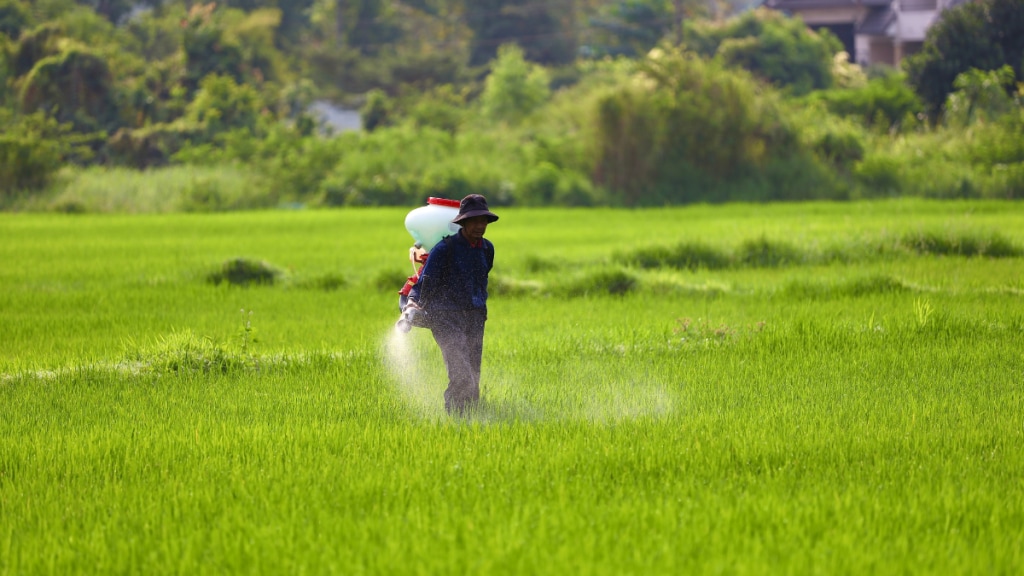As the first tranche of India-US trade deal is likely by July 9, several “sensitive” sectors of Indian agriculture have raised concerns over the potential adverse impact of the deal on small farmers if the country agrees to cut duties on agriculture products, as demanded by the US.
While the US is asking for duty cuts by India for soybean, corn, apple and dairy products, India traditionally has resisted giving market access in these areas to protect the interest of small and marginal farmers.
In addition, the US is also seeking access for its genetically modified (GM) products, even though India has not yet allowed their imports. New Delhi hasn’t granted approval for the commercial cultivation of any GM crops since the nod to the commercial cultivation of BT cotton in 2002. Commercial cultivation of GM food crops continue to be banned in India.
However, in 2021, India had allowed the import of 1.2 million tonnes (MT) of GM soymeal for chicken feed on an exceptional basis due to high domestic feed prices.
Strongly opposing any move to import soybean from the US, the Soybean Processor Association of India (SOPA) said it would make domestic cultivation economically unviable. Imports from the US under lower tariffs would hit domestic soybean producers given huge difference in cost of the production for the oilseed varieties between both the countries.
“At present, while soybean prices of the US origin was ruling around $ 390/tonne (around Rs 35,000/tonne) against our minimum support price of $ 620/tonne (Rs 5328/tonne), which makes any proposal to import soybean from US will have huge adverse impact on the domestic production,” D.N. Pathak, executive director, SOPA told FE.
There are around 6 million farmers who grow soybeans in the country. Pathak said exporting soymeal after extracting oil from imported seed as mooted by Niti Aayog is not economically viable as most of the 30 MT of crushing capacities are located in central India which would add transportation cost.
Earlier this month, a Niti Aayog working paper titled ‘Promoting India-US agricultural trade under the new US trade regime’ suggested that India should allow soybean oil imports from the US to reduce trade imbalance. This decision to allow the import of soybean oil from the US would not hurt domestic production, as the country imports substantial quantities or around 58% of India’s cooking oil consumption.
“For last five decades since the beginning of the operation in the 1970s, the government has been encouraging local production of milk and products which is the only livelihood option of millions of mostly small farmers which should not be tinkered with,” R S Sodhi, president, Indian Dairy Association, told FE. Sodhi said that the dairy sector, which is the largest contributor to agri-GDP and engages over 80 million farmers, is functioning quite efficiently.
India, the biggest milk producer in the world since 1998, plans to protect in the industry through continuance with tariff and non-tariff barriers. Industry sources said there are no discussion at present about reducing import duties on dairy products – cheese and skimmed milk powder currently attract tariffs in the range of 30-60%.
India has been the world’s biggest milk producer since 1998 followed by the United States.
While stating there is growing anticipation of a short-term ‘mini-deal’ with the United States by July 9 and a full bilateral trade agreement by year-end, Shweta Saini, agricultural economist and CEO of Arcus Policy Research, said key issues like dairy, maize, soybean, and genetically modified (GM) imports remain unresolved. “India is rightly resisting pressure to open its markets,” Saini said.
The average land holding size for small and marginal farmers in India is less than 2.7 acres, while the average farm size in the US is 466 acres in 2024.
Trade sources said easing chicken legs imports from the US (100% duty at present) would be tough for millions of Indian poultry farmers.
Frozen shrimp exports to the US, which has a major share in the country’s marine products exports, does not attract duties, while India imposes 30% duties on marine products imports from the US.

